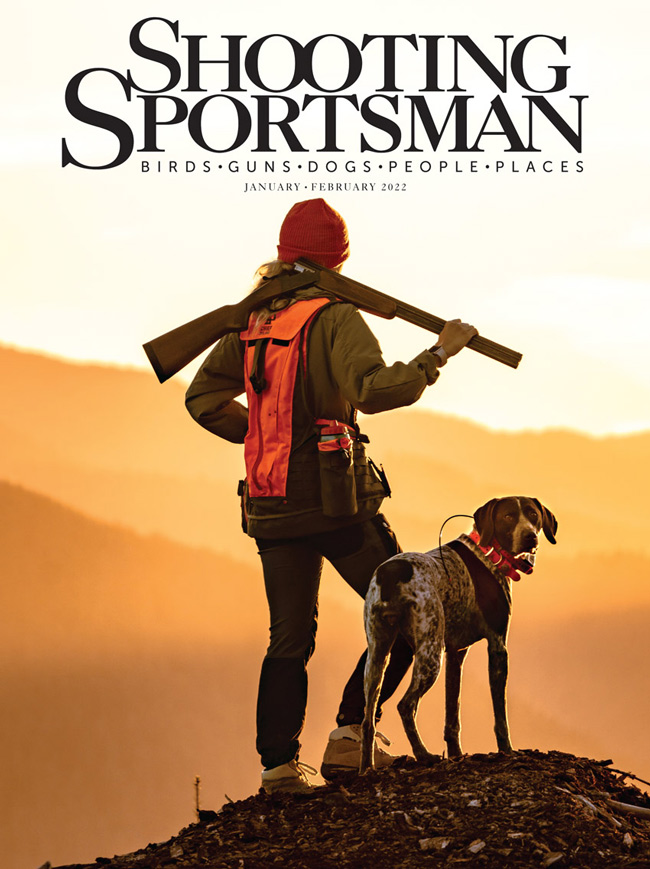Judging from the heavy volume of mail I receive, SSM readers have lots of technical shotshell questions. And pressure questions continue to lead the way. In fact, I would say that the areas of greatest ignorance and misunderstanding about shotgunning involve pressures, inertia and shotstringing. The nature of these questions has not changed in the 45 years I’ve written about shotgunning, so evidently the word is not getting out via standard shotgunning publications. Here are some examples.
I have been a subscriber for quite some time and read your columns with intrigue. My shotshell reloading has been mainly for skeet loads in 20 and 28 gauge for my Browning Citoris. I am considering two different 28-gauge reloading recipes in the same hull—one developing 11,100 psi and the other 7,200 psi.
The higher of the two pressures is nearly the maximum SAAMI-approved pressure. The difference in pressure of the higher (11,100) in comparison to the lower (7,200)—if my math is correct—is more than 1⁄3 more.
I’ve rationalized that the lesser of the two pressures might extend the life of the hull—however little it might be—but have no comparison data to draw that conclusion.
Can’t say I’ve ever made a scientific study of hull life versus load chamber pressure. So you’re on your own to try both loads and see what happens. I do know that often slower-burning powders are more “caustic” to the crimp area of plastic hulls than faster-burning powders; but it’s not a hard-and-fast rule by any means.
As far as your math goes, it is incorrect for calculating percent increase. The actual percent increase between 7,200 psi and 11,100 psi is 54%, not 33% as you calculated. This is a common mathematical error throughout shotgunning that never seems to go away. Please google “percent increase and percent decrease calculation” for a brief tutorial, or for a really simple explanation consult my column in the September/October 2014 issue.
I was reading an e-magazine article written by you about shotshell pressures. I have been reloading for shotguns for about eight years, and I came across these Dangerous Game Slugs (DGS). My problem is that most of the load data is for the Euro hulls, which I don’t have access to here in Alaska. So I was wondering if there is a way to calculate pressure and velocity just by the powder and components (US)? I have both the 1 1⁄8 and the 1 3⁄8 DGS. They come with a wad attached, which I’m not sure about as to what it is.
The short and long answer is: No. Pressures developed by ammunition can only be measured accurately empirically in a pressure gun and cannot be accurately calculated or predicted by modeling or other computer-programming shortcuts.
I do experimental reloading and am trying to work up some good loads that basically ignore SAAMI and CIP, as I feel their maximum pressures are designed for older shotguns and folks who don’t tolerate recoil well.
I use 2¾" 12-gauge 2-ounce slugs driven at about 1,400 fps. The limitation I run into on driving them even faster (my goal is 2 ounces at 2,000 fps) is the total lack of information out there for reloading information concerning 2-ounce slugs. I have little interest in holding a grenade, but the impression I am getting is that most shotguns are not really built to be strong enough to handle the pressures that something like 75 grains of 2400 behind a 2-ounce slug would generate.
Under contract to various shotgun manufacturers, I have conducted independent destructive tests on many different OEM (what you call “off the shelf”) shotgun barrels. The barrels tested revealed themselves as varying widely in strength, and all tested weaker—many much weaker (particularly those from light doubles)—than the 870 barrel I wrote about previously as one example of one relatively rare, exceptionally strong shotgun barrel.
The Aussies have used home shot makers for years to cast their own bismuth shot.
So you are playing with fire shooting service loads that exceed SAAMI and CIP max pressure standards in any current or older OEM shotgun barrel. SAAMI and CIP pressure standards are not designed for just “older guns” (whatever that means) and have nothing to do with considerations for shooters’ tolerances for recoil.
Be very careful, and abandon the idea that you know more than SAAMI, CIP or the shotgun manufacturers that adhere to SAAMI and CIP standards.
Have you any experience with home shot makers? I have cast handgun and rifle bullets for years, so I have an electronic casting pot and molds, but I have no shot-making experience.
Are there any you can recommend?
I have limited experience with home shot makers. They can cast lead or bismuth shot. The Aussies have used them for years to cast their own bismuth shot. Some US handloaders use them to cast their own lead shot, principally No. 7½s or smaller. All operate on the Bliemeister design principle (very short shot-drop distance). As a result, they do not produce as uniform or as spherical shot as the tower-dropping method. Such shot would be OK for short-range work but not long-range. Medium-range would be iffy.
There are no brands that I would recommend, and I do not have any experience with the sole one currently being advertised.
To consult with Tom Roster or to order his new Advanced Lead & Bismuth Shot Handloading Manual, his HEVI-Shot and HW 13 reloading manual, or his instructional shooting DVD, contact Tom Roster, 1190 Lynnewood Blvd., Klamath Falls, OR 97601; 541-884-2974, tomroster@charter.net.





